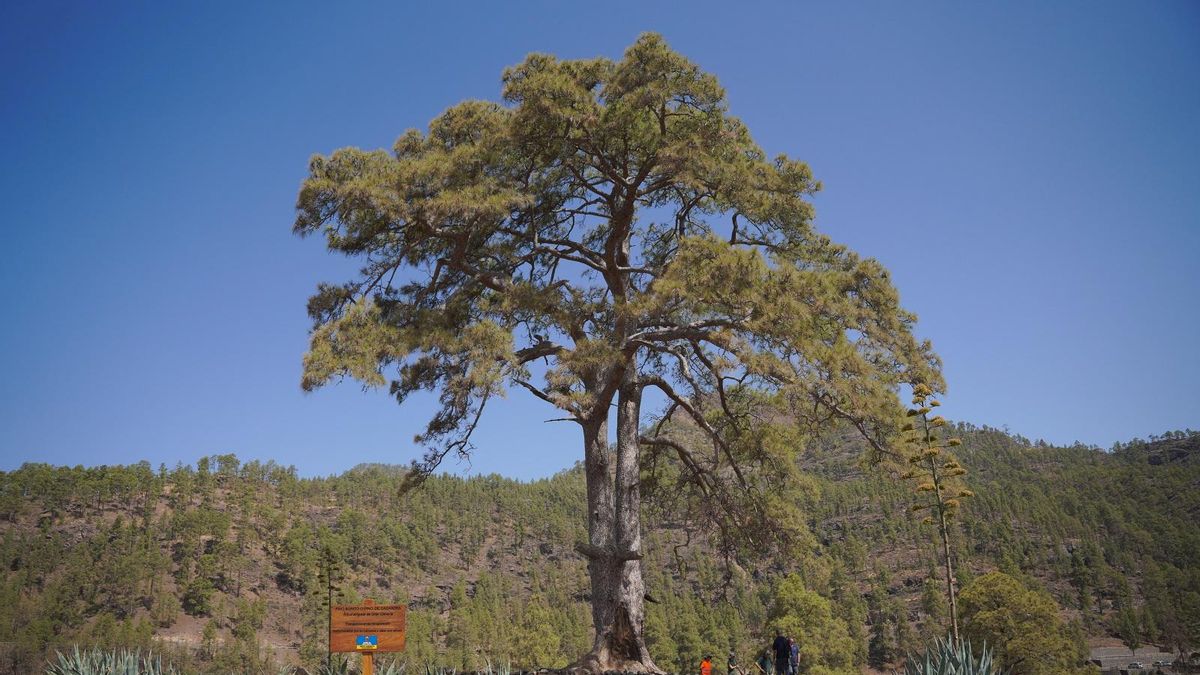Gran Canaria Launches Ambitious Conservation Plan for Ancient Pine Tree

This specimen of Pinus canariensis is located in the Majada Alta area, within the Rural Park of Nublo, next to the Las Niñas Dam. With a trunk measuring 2.5 metres in diameter at its base and a height of 25 metres, its canopy extends to 30 metres in diameter.
Conservation Initiatives
The Gran Canaria Cabildo, through its Department of Environment, Climate, Energy and Knowledge, has initiated an “ambitious” conservation plan for the Casandra Pine, also known as the Beautiful Pine. This tree is one of the oldest and most unique specimens on the island, recognised in the Catalogue of Singular Trees of Gran Canaria, which was approved in 2021.
Estimated to be over 380 years old, this specimen of Pinus canariensis has distinguished itself as one of the most notable trees in the island’s catalogue. Its trunk measures 2.5 metres in diameter at the base, and it reaches a height of 25 metres, with a canopy diameter of 30 metres.
Official Visit
On Wednesday, Environment Councillor Raúl García Brink visited the site to oversee the measures already being implemented as part of the Conservation and Maintenance Project for Palm Groves and Singular Trees, executed by Gesplan.
“We are protecting a true natural and cultural heritage of Gran Canaria. The Casandra Pine, recognised for its uniqueness both in the Macaronesian region and by the Government of the Canary Islands and the Cabildo, is a living witness to our history. It is not just about preserving a tree; it is about safeguarding a symbol that has accompanied shepherds, carriers, and walkers in the island’s summit for centuries, and it forms part of the collective memory of the Gran Canarian population,” he stated.
Positive Results
The councillor explained that the actions taken are already showing promising results. “In a very short time, we have observed an improvement in the condition of its needles, a hopeful sign that we are on the right track. Our commitment is to ensure that this singular specimen continues to be a reference for future generations, demonstrating that when we rigorously care for our environment, nature responds,” he said.
Ongoing Measures
The plan includes periodic watering with 8,000-litre tanks in June, July, and August 2025 over an area of 400 square metres beneath the canopy projection. Additionally, organic fertiliser of the bocashi type, produced in the Tafira Nursery, has been applied along with a 10-centimetre layer of pine needles, protected by a coconut fibre mesh to enhance soil stability and prevent erosion.
To manage foot and livestock traffic that can damage the roots, access paths have been delineated and consolidated, and temporary informational signage has been installed. The total budget for these actions amounts to €16,000.
In the next phase, a permanent information table will be set up to raise public awareness about the importance of protecting this arboreal monument.
García Brink expressed his gratitude for the involvement of various entities and teams in this project, including the Tafira Nursery, responsible for producing the bocashi applied to the soil; the University of Göttingen, which participated in assessing the tree’s condition in 2022; and the Water Users Community of the Las Niñas Dam, particularly acknowledging its former president, Diego Cambreleng, as “an example of public-private collaboration.”
He also highlighted the work of the Phoenix Unit of Gesplan and the team responsible for singular trees in the department, “whose efforts have been key to executing the conservation measures.”














